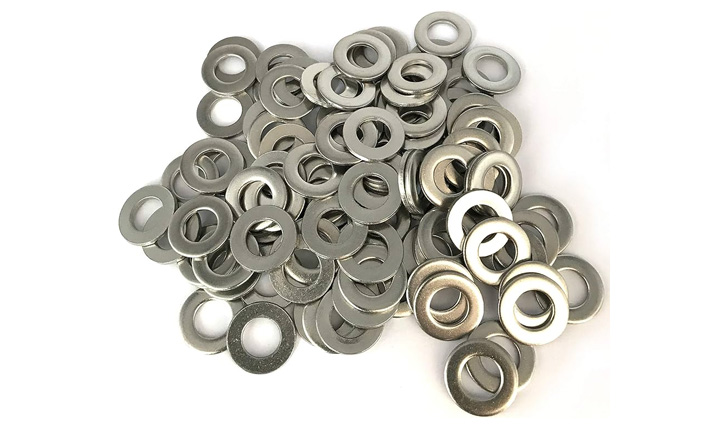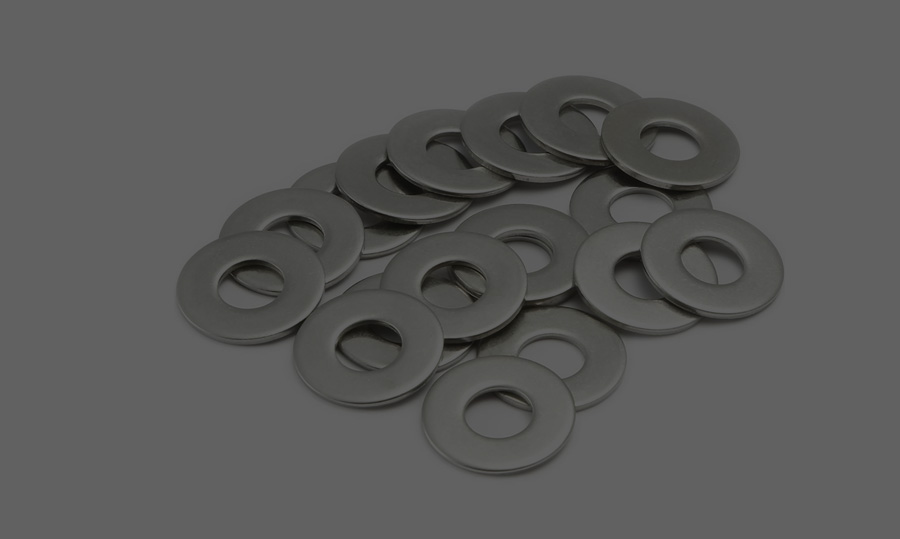Washers can be considered as some minor components in any assembly and they do not play a big role in the overall construction but in fact, they are very important. These relatively uncomplicated parts are employed to support a load of a fastener, minimize friction, seal, and shield surfaces. The quality of the washers used can greatly affect the integrity of the entire assembly of the device. This blog will explore how to tell a low quality washer and the consequences of using such a product, let alone sourcing them from a reputable washers manufacturer.
The Critical Role of Washers
Before diving into the identification of inferior washers, it's essential to understand their function in any assembly. Washers are designed to.
- Distribute Load : They distribute the load of a fastener over a larger area thus not causing any harm to the surface
- Reduce Friction : Washers also minimize the contact between the fastener and the surface to be fastened, thus providing a firm grip
- Prevent Leakage : In applications where the use of fluids is involved, the washers are used to prevent cases of leakage
- Protect Surfaces : They prevent the surface of the material from being marred or damaged by the fastener
Common Signs of Inferior Washers
Identifying inferior washers is crucial to maintaining the integrity of your assembly. Here are some common signs to watch out for
- Material Inconsistencies : Another clear indication that a particular washer is of low quality is the fact that it is made from low quality materials. Washers used in high-quality applications are usually manufactured from stainless steel, brass, or nylon, depending on the use. Low-grade metals or plastics can be used in inferior washers, which can corrode, crack or wear out quickly. It is also important to always look for material certifications from your washers supplier to confirm on the material used
- Poor Finish : A high quality washer will be free from burrs, sharp edges or any uneven surface and will have a polished surface. Substandard washers may have a matte or dull surface and may also have some surface irregularities. These imperfections may result in improper seating of the parts, unequal load distribution, and increased friction, which are all detrimental to the assembly
- Inconsistent Thickness : Washers should be of uniform thickness all over. Variation in thickness may result in uneven distribution of the load and hence the fastener may become loose over time. One can use a micrometer to measure the thickness of the washer at different points to determine the unevenness
- Incorrect Dimensions : The manufacturing of washers requires high precision. Substandard washers may not fit the correct dimensions and hence may not fit as required. It is always important to compare the dimensions of the washers you receive with the ones that your washer's exporter provided
- Lack of Coating or Poor Coating Quality : Washers that are to be used in corrosive areas should be coated to avoid rusting and corrosion. Superior washers will have this layer or will have a thin layer that will peel off very quickly in inferior washers. Check the thickness and the quality of the coating
- Subpar Performance Under Load : The ability of a washer to perform under load is one of the most important tests that can be done on a washer. Poor quality washers may change shape, break or distort when an assembly puts pressure on them. When the washers are tested under conditions that mimic their application, then their quality will be revealed
- Weight Discrepancy : The weight of a washer can reveal a lot about its quality. Inferior washers may weigh less due to the use of cheaper, less dense materials. Comparing the weight of a sample washer with a certified high-quality one can help you spot this discrepancy
- Lack of Markings : High-quality washers from reputable manufacturers often come with markings that indicate the material grade or manufacturer’s logo. The absence of these markings can be a red flag, suggesting that the washer may not meet industry standards
- Unusually Low Cost : While everyone loves a good deal, an unusually low cost can be a warning sign of inferior quality. If the price of a washer seems too good to be true, it probably is. Always compare prices from various suppliers and consider the potential costs of failure before opting for the cheapest option
- Unknown or Unreliable Suppliers : Always purchase washers from a known and reputable washers manufacturer or washers supplier. Suppliers with a history of providing subpar products or without verifiable credentials should be avoided. Research and customer reviews can provide insights into the reliability of a supplier

Choosing the Right Washers
Given the risks associated with inferior washers, it is crucial to choose washers from a reliable and reputable source. Here are some tips for selecting the right washers :
- Research the Manufacturer : Make sure that the washers manufacturer you select has a good reputation for making quality washers. Search for accreditations and other standards that would assure the quality of the products that they offer
- Request Samples : In order to avoid buying low-quality washers, ask for samples to use and check the quality before placing a big order. This can assist you in finding out any problems that may be likely to occur in your assembly before they do
- Check for Material Certification : When purchasing your washers always ensure that you request for certifications from your supplier. This helps to guarantee that the washers are produced from the right material and to the right specifications
- Evaluate the Manufacturer's Quality Control : A good exporter of washers will have very sound quality control measures in place. Inquire about their quality assurance measures to ensure that the washers you are to receive are of the right quality
- Consider the Application : Select washers that are suitable for the conditions of your application in terms of load, temperature, and environmental factors
- Observe the Surface Quality : Beyond a simple visual inspection, feel the washer’s surface. Inferior washers may have uneven surfaces, signs of rust, or a rough texture. High-quality washers typically have a smooth, polished surface that indicates thorough manufacturing processes
- Perform Metallographic Analysis : For critical applications, conducting a metallographic analysis can be essential. This process involves examining the microstructure of the washer material to ensure it meets the required specifications. Inferior washers often show irregular grain structures or inclusions that can weaken their performance
- Visual Inspection : A visual inspection is the first line of defense against inferior washers. Look for obvious defects such as cracks, irregular shapes, or discoloration. These defects can indicate poor manufacturing processes or the use of low-quality materials
Conclusion
Washers may be small, but their importance in any assembly cannot be overstated. Using inferior washers can lead to many problems, from fastener loosening to corrosion and surface damage. By identifying the signs of inferior washers and choosing a reliable washers manufacturer, you can ensure the integrity and longevity of your assembly. Always prioritize quality over cost, as the long-term benefits far outweigh the initial savings of using cheaper, inferior washers
You can Contact Nufit Flanges at sales@nufitalloys.com to discover more about Washers, and their applications.

